3 dream stereo systems for lovers of high-end hi-fi
High-end hi-fi is not just for those who can afford it. Much as car enthusiasts pore over every detail of the latest six-figure super vehicle, and those fated to a life of renting spend afternoons idly watching home renovation programmes, there is great joy to be had in looking at speakers and amplifiers you are never likely to own.
But if you do have a budget of £15k to £35k solely to spend on your next hi-fi system – or you're after something to tempt you into spending that much – then the three systems listed below will provide more than worthy inspiration.
You'll find a host of high-end favourites – from Luxman to Vertere, ATC to PMC – all chosen specifically to complement their surrounding systems in terms of price and presentation, but mostly compatible enough to slot into a similarly competent existing set-up.
But even if you're a winning lottery ticket away from owning kit such as this, there is worthwhile beauty to be found in their engineering, much of which has effects trickling down to much more affordable hi-fi kit – so it's worth learning about as much as it is worth admiring.
And we're certainly not here to shame anyone for just drooling over the pictures.
System one
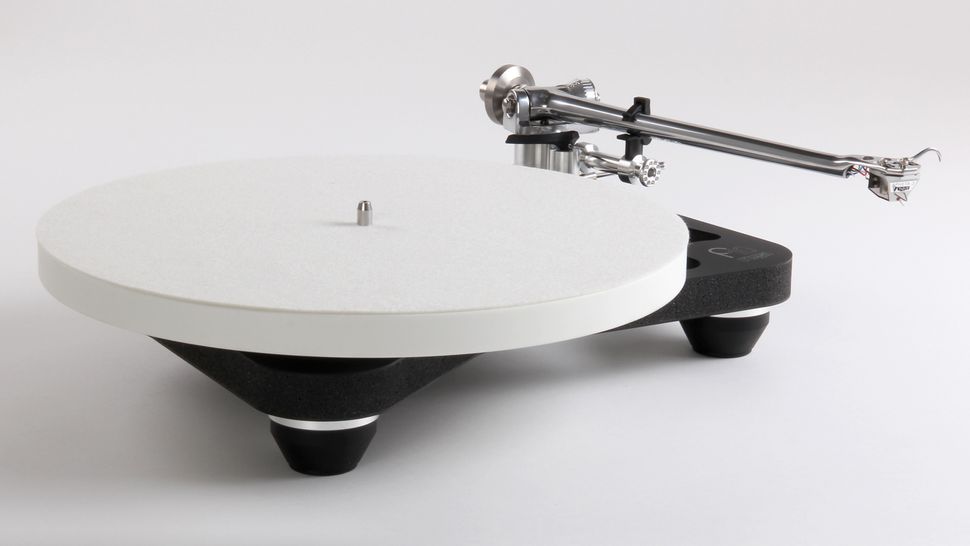
Turntable: Rega Planar 10/Apheta 3 (£4499) | Phono stage: Naim Stageline (£419) | Streamer: Chord 2go/Hugo 2 (£995/£1799) | Amplifier: Naim SuperNait 3 (£3499) | Speakers: ProAc Response D2R (£2795)
Total: £13,346
We begin with a turntable and streaming system that edges comfortably into a five-figure budget, especially when you consider the supports you’ll need for all those high-end electronics and standmount speakers.
As a third of the total price is going on the turntable, that seems as good a place as any to begin. The Rega Planar 10 with Apheta 3 cartridge is as close as you’ll get to the company’s £30k limited edition Naiad deck for this money, offering a good slice of the latter’s performance, but as a production version at a far more approachable price.
It is quite some engineering statement. Visually, it’s as striking as turntables get at this level, but this isn’t design for its own sake. Each detail is backed with solid engineering reasons – a combination of shedding excess mass yet adding it to the custom ceramic platter – and it all comes together to create what is unarguably the most sonically capable turntable we’ve heard at this price.
A belt-driven operation, the Planar 10 uses a 24v AC motor driven by an external power supply, which in turn drives the beautifully made sub-platter through a pair of round-sectioned belts Rega spent three years developing for required precision and elasticity. All evidence that, at this price especially, every detail matters.
It is possible to buy the Planar 10 without a cartridge, but Rega’s Apheta 3 – the third generation of this moving coil with a redesigned, single-piece aluminium adonised body – makes such an ideal partner that going for anything else doesn’t make much sense. Particularly when you consider the £350 saving you’ll make if you buy the pair as a package.
The Planar 10 chooses a more measured approach to music replay than its more affordable siblings. There are no sonic fireworks here, but give it time and it becomes apparent that few price rivals come close to matching the Rega’s combination of transparency, detail resolution and dynamic expression.
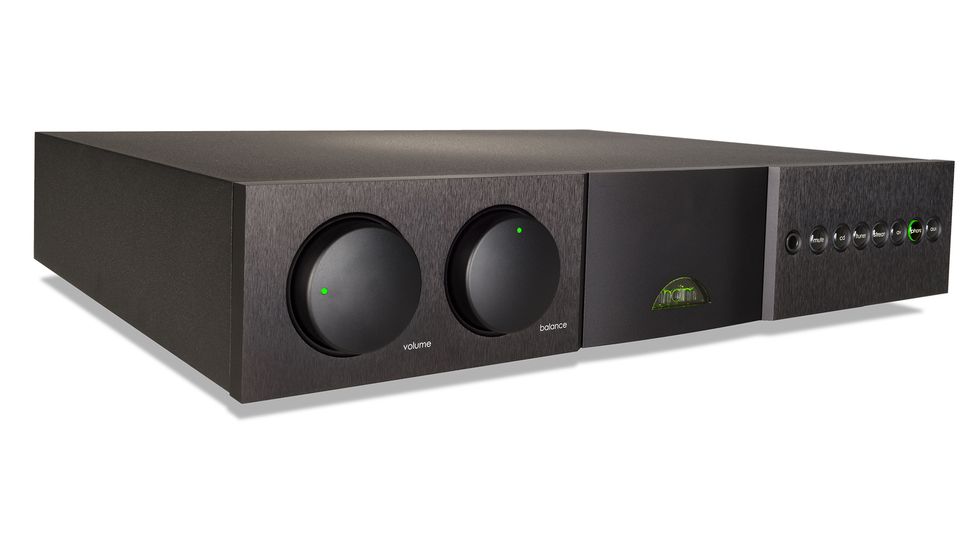
But you still need an amplifier that will complement it well, and that is where we bring in the Naim Supernait 3. Archetypally Naim in design and performance, this third-generation integrated amp made only small-scale improvements to its already brilliant predecessor – adding a moving magnet phono stage and featuring a slightly simplified and tweaked power section – but any major surgery could have tampered with its truly astonishing sonic performance.
It is about as well equipped as an all-analogue amplifier needs to be. There are four line-level inputs, each offering the choice of conventional RCA or Naim’s favoured Din options, which we think sound just that bit better.
There’s a variable line output available with both socket times, in case you want to add a power amplifier or subwoofer, and you can also make use of Naim’s Flatcap (£939), Hi-cap DR (£1419) or SuperCap DR (£4599) outboard power supplies.
The Supernait 3 sounds solid and muscular, handling whatever you throw at it, and such confidence works wonders for the listener. We can’t think of a more capable alternative when it comes to rhythmic drive and precision, either; the Naim conveys the changing momentum brilliantly, capturing various mood changes with conviction.
When that subliminal messiness of an amplifier struggling isn’t present, it’s easier to focus on the music instead. That’s what the Supernait, regardless of generation, has always done best.
If you’re partnering it with the Planar 10, however, its moving magnet phono stage is of little use unless you opt for a different cartridge to the Apheta 3. So permit us to suggest the Naim StageLine. It isn’t something for which we’ve written a review, but we have heard it enough to be confident of its uniformity when it concerns the Naim sound – especially as a partner for the Supernait 3.
But a high-end system need not always entail high demand upon its user, and so we introduce the Chord 2go and Chord Hugo 2 streaming DAC combination to this set-up. The Hugo 2 is comfortably the best portable digital-to-analogue converter you can buy for less than two grand, and will easily accommodate other high-end digital sources you want to pair with the analogue-only Supernait.
When paired with it, the 2go simply makes for a cost-effective and space-saving means of adding hi-res streaming to your system – or to take with you on the go – while innately complementing the character of the Hugo 2.
More than just a DLNA streamer, thanks to two microSD card slots that can handle up to 4TB of stored files it can work as a server too – any other device on the same network can play the songs stored on the Chord. Add embedded Tidal and Qobuz capability alongside internet radio, Bluetooth (4.1, A2DP) and AirPlay, and you have a wonderfully versatile digital music source that can act as a Roon endpoint as well.
It’s fair to say that this Chord combination makes for one of the most capable music streamers we’ve heard. We’d be hard pushed to name an alternative that can dig up so much detail and present it in such a clean and precise way. Add to that some fluid dynamics and an agile sense of rhythm and you can begin to understand why it will slot so neatly into this system.
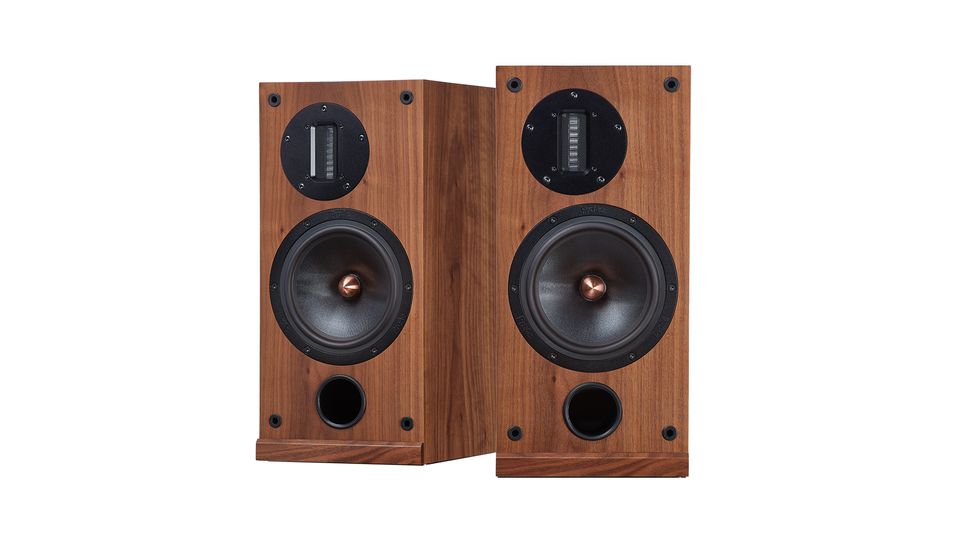
It is of little use blending those complementary talents of the above electronics without an equally transparent and dynamic pair of speakers, which is why we’re suggesting you side with ProAc and its Response D2R standmounters.
This is a mid-sized standmounter that stands 43cm high. The headline is the use of a ribbon tweeter. It’s the same lovely 60 x 10mm unit as used on the company’s pricier Response models. There’s a damped rear chamber behind the diaphragm to help with dynamics and clarity and, rather unusually, an Alnico magnet rather than the Neodymium we might expect.
In its own way, the 16.5cm mid/bass driver is just as impressive a unit, with its stiff chassis, carefully honed motor system, copper phase plug and glass fibre cone. It’s tuned by a forward-firing port and is claimed to reach down to a pretty impressive 30Hz.
Most importantly, though, the Response D2Rs are wonderfully expressive speakers, even at low volume levels. Their performance is agile and lively, mixing information with entertainment as well as anything else we’ve heard at this price.
The midrange is a real highlight, and these speakers convey the nuances and varying textures of each part superbly, making it sound alive. We’re pleased with the way these speakers deliver complex rhythms, too; there’s precision coupled with a good sense of drive, and the ability to sound fluid while doing it.
The ribbon tweeter shines in the amount of detail it resolves, and unlike similar designs, avoids sounding a little sterile and tonally grey. The integration with the mid/bass unit is handled seamlessly and there’s a consistency of character from the lowest frequency upward that’s impressive.
In short, they provide an honest and transparent mouthpiece limber enough to keep up with the fast and dynamic turntable and streaming system that here sits behind them.
For a budget between £10k and £15k, we’re struggling to imagine how we’d create a better value, better-matched system than this without some considerable discounts.
System two
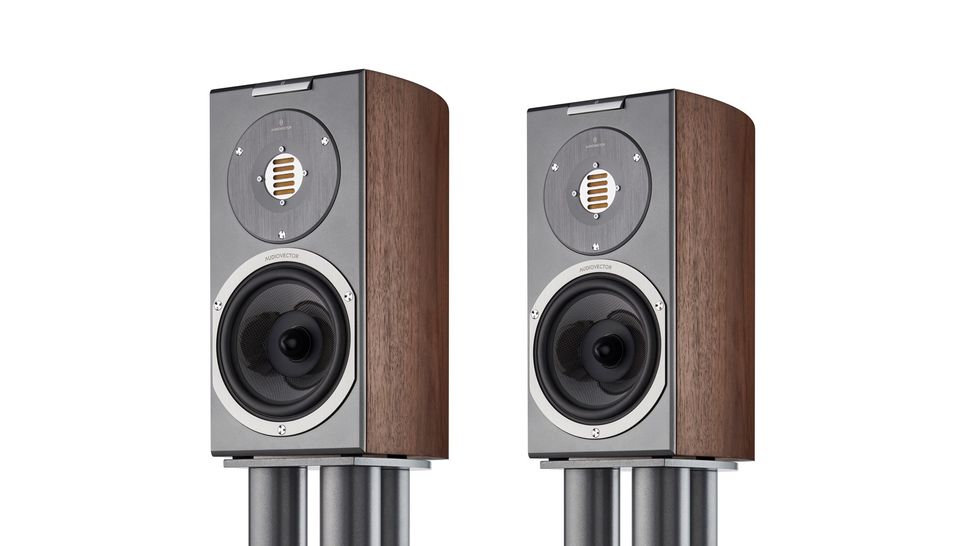
Turntable: VPI Prime Signature/Lyra Delos MC (£6000/£1200) | Phono stage: Vertere Acoustics Phono-1 MkII (£1000) | Streamer: Naim NDX 2 (£5299) | Amplifier: PMC Cor (£4995) | Speakers: Audiovector R1 Arreté (£4799)
Total: £25,993
For most, spending a sum close to the national average yearly salary is unfathomable, unless perhaps as a house deposit or a brand new car, but there’s no doubt it can afford you the kind of hi-fi system that will last a lifetime.
Like the previous system, this one comprises a turntable, phono stage, streamer, amplifier and speakers, but we’ve upped the budget to just above £25k.
For starters, it means we can include the superlative VPI Prime Signature as our analogue source. We wondered how, having handed VPI our Temptations Award in 2015, its engineers would have been able to improve on this class-leading deck, but they returned in 2018 with an astoundingly superior version.
The Signature’s plinth is now made up of two layers of gloss MDF sandwiching a chunky aluminium plate, and is notable thicker overall. This arrangement improves damping and rigidity, giving the arm and platter a better foundation to work from.
The deck’s four feet are upgraded to improve isolation and the motor housing is taller to compensate for the extra height of the new plinth and feet. This larger motor housing (made mostly of steel) has more mass, which means lower resonance and greater damping of vibrations. The result is less energy being fed back into the deck’s structure through the surface they are sitting on and better sound.
The thick 9kg aluminium platter, 24-pole AC motor and main bearing all remain from the original, and that’s no bad thing. Changing speed from 33 1/3 to 45rpm is done by manually moving the drive belt from one step of the motor pulley to the next, however, so be prepared for more than a press of a button.
Those not familiar with higher-end turntables may also find the arm somewhat fiddly to set up – it’s a unipivot design, where the bearing is a single sharp point onto which the arm bearing housing sits – and it doesn’t come with a cartridge, but you can find a wonderful working partnership with the £1200 Lyra Delos moving coil.
The result is a bold, dynamic and insightful presentation with excellent rhythmic ability. It’s the kind of presentation that will take any tired clichés of vinyl being a sluggish, flabby medium and tear them up in right in your face.
Every note has a purpose and goes into helping the music make sense; the ebb and flow of music is conveyed with a determined and assured quality that’s hard not to admire.
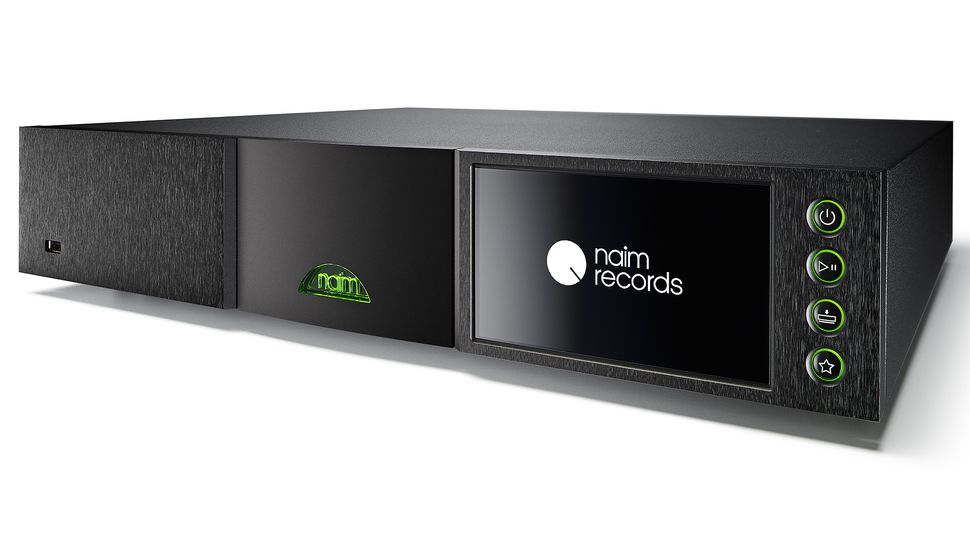
It needs a comparably talented phono stage to amplify and translate, of course, and the fact that the Vertere Acoustics Phono-1 MkII also finds its way into our next, even more expensive, high-end system should suggest just how talented a unit it is.
Get right its many possible adjustments for gain, capacitance and resistance and you’ll be able to optimise the Vertere’s performance for most cartridges on the market, and in this case provide a superbly detailed and dynamic presentation to be amplified again by the PMC Cor.
But before we get to amplification, let’s look at our streaming source: the exquisite Naim NDX 2. It sits in the middle of the company’s three-strong hi-fi streamer line-up, and is about as well equipped as they come. There are no obvious holes in file compatibility and it can play up to 32-bit/384kHz PCM and DSD128.
There’s aptX HD Bluetooth alongside Apple AirPlay, Spotify Connect and Chromecast. Tidal is also embedded and it is Roon-ready. In short, this is a product that is more than happy to play any music file you have, in any way you want.
Connectivity is as good as you’d expect, too. There are options of wired or wireless network connection, coaxial, optical and USB inputs, and both RCA and Din analogue outs. There’s a coax digital output, too, but you’ll have to go some way to beat the circuit already in the NDX 2 – based around a Burr-Brown PCM 1792 and mated to in-house filtering and supporting circuitry.
Sonically, there’s a confidence about the Naim’s presentation and a sense of organisation that's rare in streamers, even at this elevated level. The NDX 2 is capable of punch and power combined with an infectious sense of fun. While this streamer ticks all the boxes when it comes to hi-fi specifics such as transparency, detail resolution and stereo focus, it never forgets to wrap it all in a blanket of entertainment.
That bold, punchy yet subtle sound – as with that of the Prime Signature and Phono-1 – is mirrored beautifully by the aforementioned Cor amplifier. This integrated is a simple beast at heart. The designers aimed for transparency and musicality above all else, and such qualities tend to be stifled when combined with a complex and/or extensive features list.
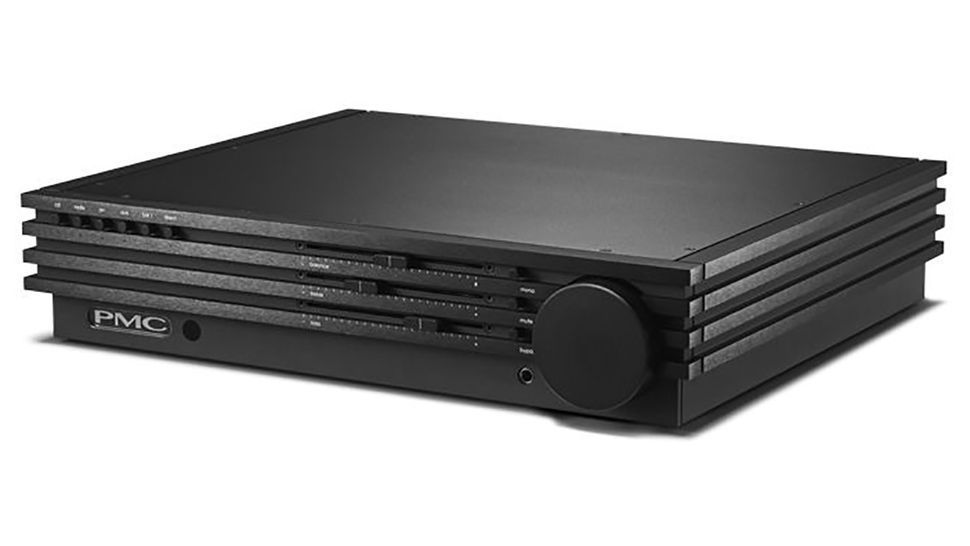
It’s a purely analogue amplifier with short, clean signal paths. It uses Class A/B circuitry and produces 95W per channel, which rises to 140W into a 4ohm load. There are five line-level inputs, including a single balanced XLR. It’s a basic features list, but covers all of the essentials.
At the front, you’ll find a large volume control, a series of tactile press buttons for input selection, mono and a bypass mode that gives the cleanest signal path (leaving the bass, treble and balance slider controls out of the circuit).
The Cor is essentially transparent to the source, so if you like what that does then you should enjoy the results this amp will give you. That puts added importance on the quality and presentation of what you plug into it, which is why products with the quality of the VPI and Naim here are imperative, but there is nothing wrong with hi-fi components demanding the same aptitude from the rest of the chain.
And we should think the Cor will be mightily impressed if you decide to pair it with the Audiovector R1 Arreté speakers. The top of the company’s upgradable line of standmounters, the Arreté specification represents the pinnacle of Audiovector’s technology.
It features an open-backed version of the company’s in-house, hand-built Air Motion Transformer tweeter, with a vent positioned just above the reflex port for the 16.5cm carbon fibre mid/bass unit – and a carefully calibrated crossover network links the two drivers. That crossover is even cryogenically frozen down to -238ºC in a process intended to relieve internal stresses in the copper conductors and reduce resistance.
It’s all part of the kind of attention to detail that makes these some of the most musical-sounding speakers you can buy for around five grand. These are the kind of speakers that allow you to analyse the production of a recording, but they’d rather you step back and enjoy the musical experience.
And that’s about the long and short of this system all-round: your increased budget should buy you a lot of information and insight, but we are still talking about components that will deliver the feeling of the music rather than simply allow you to write an aural thesis.
As far as we’re concerned, this is about the most fun you could have at home for £25k.
System three
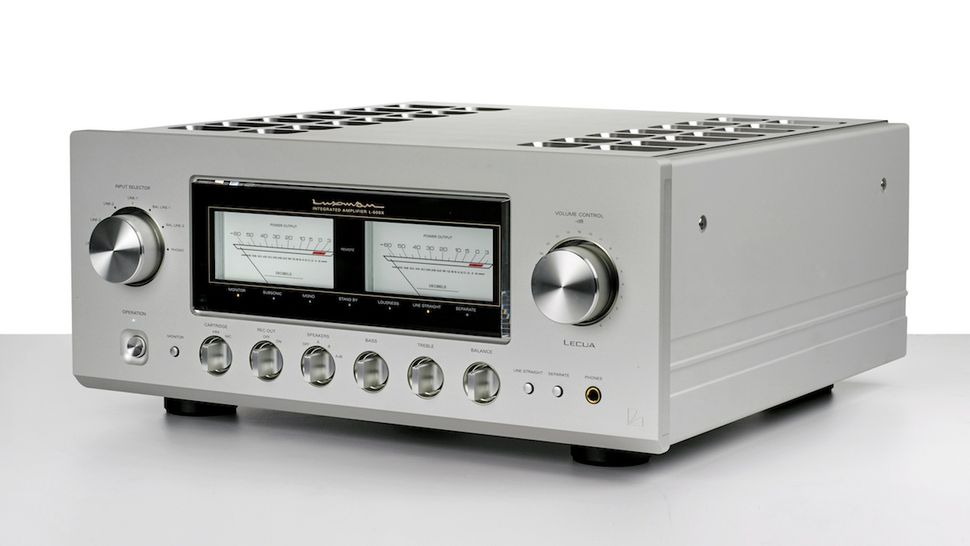
Turntable: Vertere Acoustics MG-1 MkII/SG-1 MkII/Mystic MC (£9300) | Phono stage: Vertere Acoustics Phono-1 MkII (£1000) | CD player: Marantz SA-10 (£6000) | Amplifier: Luxman L-509X (£8499) | Speakers: ATC SCM50 (£9820)
Total: £34,619
And so we reach the top tier of this triumvirate of high-end systems, and it includes a pair of speakers that have been part of our reference set-up for well over a decade.
This time we’re staying offline with our duo of sources and celebrating physical media as we pair a Vertere Acoustics turntable and Marantz CD player with a gorgeous Luxman integrated amplifier and those trusty ATC speakers.
That Vertere deck, which again we’ve paired with the company’s Phono-1 MkII phono stage, is the MG-1 MkII. The MG-1 is just the second step-up in a four-strong turntable family, though it still sits firmly in the high-end sector of the market once the SG-1 MkII tonearm and Mystic MC cartridge are included.
The mastermind behind the company is none other than Touraj Moghaddam, founder of Roksan and designer of the long-running, innovative and rather brilliant Xerxes and TMS turntables. And with around 35 years of turntable design experience coming into play, it's no surprise to find that the MG-1 MkII package comes across as a fully polished product.
At the heart of the turntable’s structure is a triple-layered acrylic construction that uses precisely tuned rubber isolation mounts to control and filter the flow of vibrations within the deck. There are so many interesting details here: from a motor body that’s free to rotate, so that belt tension remains constant, to a removable centre spindle on the platter that stops noise from the bearing being directly transmitted to the record surface.
Even apparently standard items such as the platter are designed with a twist. In this case with most of the mass concentrated on the outside edge to maximise inertia without adding unwanted weight, so helping speed stability again.
The result of all Vertere’s innovation is a deck that excels in about every sonic measure. There’s so much information on offer, with the deck giving the impression of being able to uncover every detail in the record groove, and all that insight is delivered in a coherent and organised way, no matter how complex the music gets.
We can’t recall a similarly priced alternative that sounds as precise or as articulate, either. Notes stop and start with minimal overhang, and rarely do we hear such articulate and textured bass from vinyl, regardless of price, and particularly when it’s combined with such authority and punch.
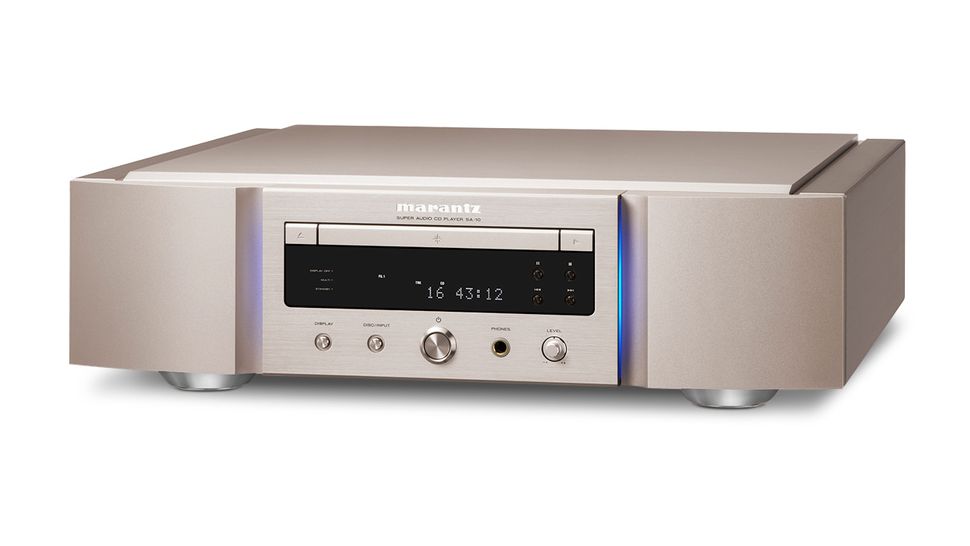
It’s a blend of transparency, information and surefooted rhythmic sense that is complemented brilliantly by the other source in this set-up.
Marantz doesn’t often produce top-end disc players, but when it does they are usually done right. So it proves again with the SA-10. Notice we say disc rather than CD player, as the SA-10 also reads SACDs and music stored on DVD-ROMs. File compatibility is impressive, ranging from 24-bit/192kHz FLACs and DSD 128 all the way to ALAC, AIFF and MP3s.
The company has long been a master at getting the most from its circuits and here you’ll find the use of high-quality components and extensive shielding combined with sophisticated power supply arrangements. This may be an expensive product, but it’s obvious where the money has gone.
Disc drive aside, you can access the player’s digital-to-analogue circuitry through USB type B (up to 32-bit/384kHz PCM and quad DSD), coax and optical digital inputs; or you can play music from a USB memory stick or apple device through a USB type A connector. If you’re using an iPhone, though, the Marantz can’t handle anything after the original 6 and 6 Plus.
But most importantly this is a wonderfully refined performer, one that has a sweet and smooth disposition yet enough in the way of bite to satisfy. There’s a stunning amount of detail and it’s organised with care and composure. We’re struck by the way the Marantz renders instrumental texture and the subtlety with which it tracks small-scale dynamic changes.
This pair of sources are so talented they are deserving of a partnering amp as accomplished as the Luxman L-509X. It’s a fully loaded analogue amplifier, packing a moving magnet/moving coil phono stage, headphone output, tone controls and switchable speaker outputs – all things in demand back when its decidedly retro appearance was the latest fashion.
Alongside the phono stage – which we’d still suggest here upgrading to the Vertere Phono-1, this Luxman also has four single-ended RCA line-level ins and two balanced XLR options. We can’t think of a typical stereo set-up in which it might get caught short.
The L-509X is an amplifier that creeps up on the listener when the music starts. It has an understated presentation it takes a while to appreciate. Those looking for sonic fireworks will find them here only if they’re in the recording. This amplifier doesn’t spice things up for entertainment’s sake.
But this is an impressively detailed and insightful performer, one that’s capable of class-leading clarity. It recovers subtleties, even in the densest of recordings, and keeps them audible as arrangements become more demanding.
Dynamic swings are delivered with enthusiasm, the amplifier’s generous power output obvious in the punch and solidity of the presentation. There’s no shortage of drama in the sound, yet we become aware of the L-509X’s impressive composure and the sense of control it imparts.
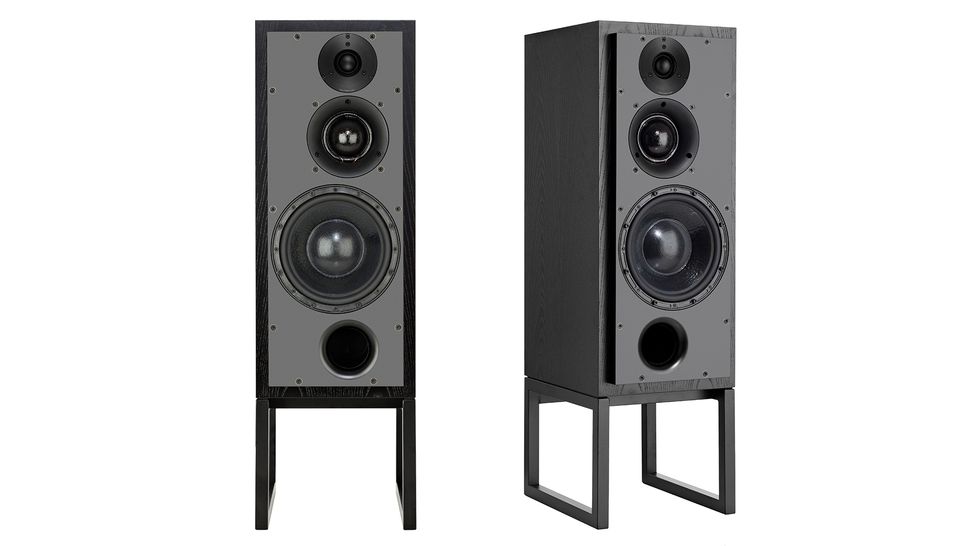
It’s the kind of composure we’re used to hearing at What Hi-Fi?, specifically when displayed by our reference stereo speakers, the ATC SCM50.
We’ve been using them as our reference speakers for well over a decade, and over that time they’ve been connected to just about every piece of electronics that has passed through our test rooms, from budget microsystems all the way up to monster pre/powers. In all that time, and with those many hundreds of components, they have never once let us down.
ATC’s focus is always on good solid engineering and a close look at the SCM50s makes that clear. The company’s background is firmly planted in the pro world, where reliability and high power handling are essentials. Its engineers value low distortion and dynamic ability and spend years developing the three drive units on show here.
The brand also has firm ideas about using hard cone materials such as aluminium – it doesn’t like them because they ring – so it comes as no surprise to find the 25mm tweeter and 7.5cm midrange unit both use well-damped fabric dome diaphragms. A 23cm woofer with a stiff fibre and resin composite cone produces the lows and is tuned by a large, front facing port. Around the back are three sets of terminals, so it’s possible to tri-wire or even better, tri-amp.
Every so often we come across rival speakers – usually of higher cost – that better these ATCs in some respect, whether it’s outright resolution, openness, stereo imaging or rhythmic precision.
Yet we haven’t managed to find something that’s as satisfying an all-rounder or as practical to use as a day-to-day review tool. Considering the SCM50 was originally introduced in the mid-80s, that’s quite some achievement. It seems great engineering doesn’t date.
And that’s exactly why you can be confident in every element of this truly high-end system. None of them are designed simply to wow at first meeting, but to live with you over decades. Gather a group of like-minded products such as this and you’ll never need to upgrade your system again.
MORE: